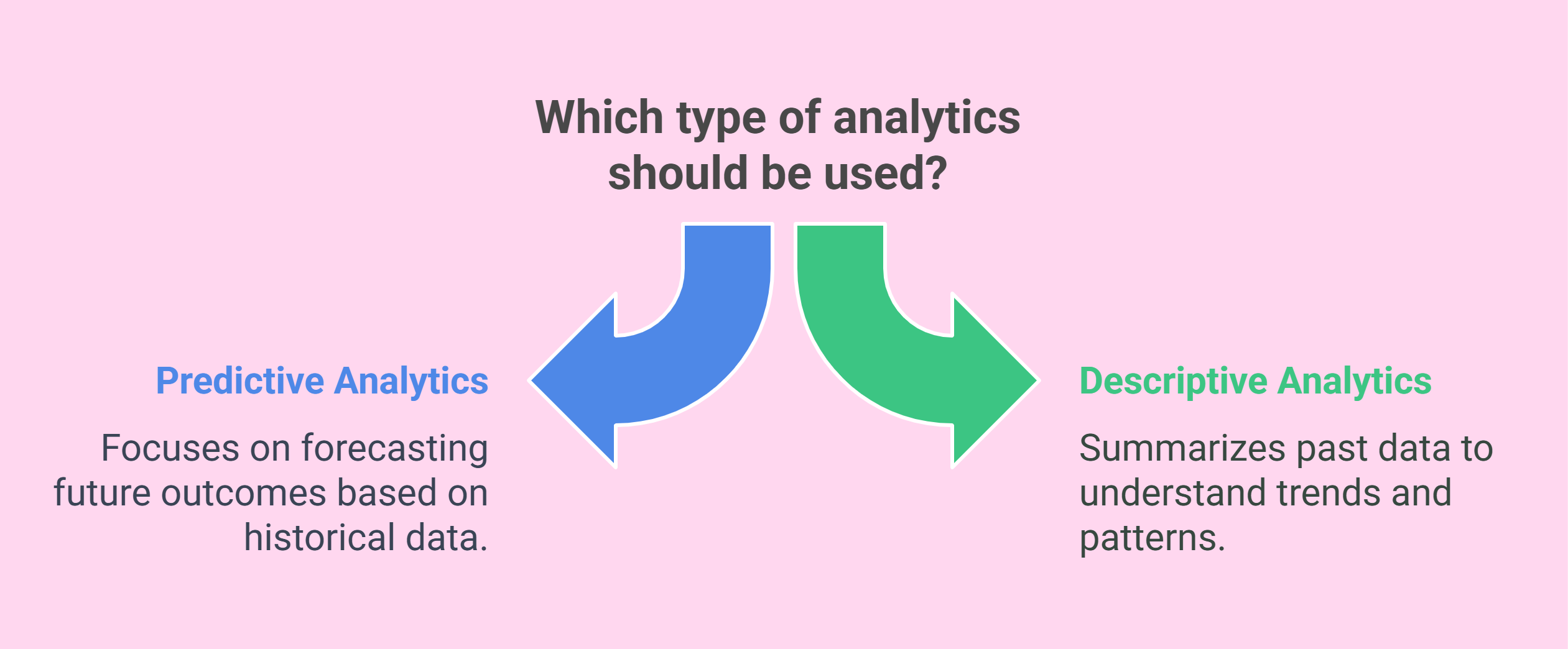Ever felt like a detective, digging through data to figure out what really happened? That’s the heart of descriptive analytics—looking back and making sense of the past. Now, picture having a crystal ball that helps you see what’s coming next. That’s predictive analytics—using patterns and trends to forecast the future.
Both are incredibly valuable tools in business, but they serve different purposes. In this article, we’ll break down the key differences between the two, and show you how they work together to drive smarter decisions.
Exploring a career in Data Analytics? Apply Now!
Understanding Descriptive Analytics: The Storyteller
Descriptive analytics is like looking in a rearview mirror. It tells the story of the past, summarizing raw data into understandable insights.
Think of your monthly sales report. It tells you how much you sold, which products were popular, and who your top customers were. It describes what already happened.
Common descriptive analytics techniques include data aggregation, data mining, and dashboards showcasing Key Performance Indicators (KPIs). These provide a snapshot of your business performance.
Examples include website traffic analysis, using tools like Google Analytics, or tracking customer demographics.
Harnessing Predictive Analytics: The Fortune Teller
Predictive analytics, on the other hand, is forward-looking. It uses historical data to predict future outcomes, making educated guesses about what might happen.
Imagine using past sales data, coupled with economic forecasts and marketing campaigns, to predict next quarter's revenue. That's predictive analytics in action.
Techniques used here include machine learning algorithms, statistical modeling, and simulation. These methods extrapolate from the past to project the future.
Real-world examples include predicting customer churn, forecasting inventory needs, or assessing credit risk.

Key Differences: A Side-by-Side Comparison
While both methods rely on data, their purpose and approach differ significantly. Let's break it down further:
|
|
|
|
|
|
|
|
|
|
|
|
|
|
|
|
|
|
|
|
The key difference lies in their temporal focus: descriptive analytics illuminates the past, while predictive analytics sheds light on the future.
One provides context, the other provides foresight.
Conclusion: The Power of Combined Insights
Descriptive and predictive analytics aren't mutually exclusive. They work best together, creating a powerful synergy for data-driven decision-making.
Understanding past performance through descriptive analytics lays the groundwork for accurate predictions. These predictions, in turn, inform better strategies and more effective actions, enabling businesses to thrive in a competitive landscape.
Dreaming of a Data Analytics Career? Start with Data Analytics Certificate with Jobaaj Learnings.
















